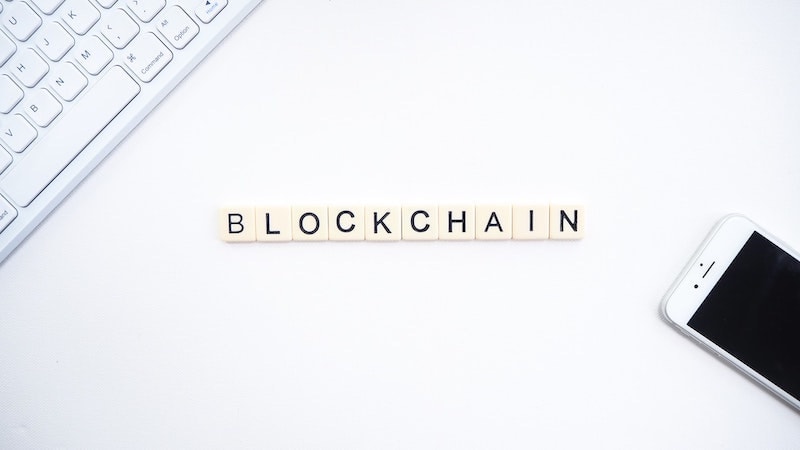
Currently, blockchain is a hot topic, primarily in the context of Bitcoin and other cryptocurrencies. However, don’t confuse these two subjects. Cryptocurrencies are just one of many possible applications of the blockchain technology. Blockchain-based solutions can significantly affect not only the world of finances but also issues like politics, transportation, product life-cycle, energy, virtual identity, business operations and, yes, online marketing as well. How so? Let’s start at the beginning.
The new reality, new Internet, new technology
The great, massive doors of the US Congress open. A somewhat scared young CEO of a technological start-up enters the room. He is here because they asked him to testify about what drives today’s companies. Long story short – he is going to talk about data, primarily personal.
This young man starts his statement with some mind-boggling numbers:
- Facebook has 80% of traffic on social media
- Google has 92% of traffic in search engines
- Amazon is larger than its four largest competitors combined
They track our every move, monitor every moment of our lives, and use our data for their benefits. These companies are kings, and they have clear supremacy. However, we didn’t loose the war yet. We can win by creating a new, democratic, decentralized Internet. An internet where such a hegemony would not be possible. An Internet, where users, not kings, have the power and control over their personal data.
This is how the first episode of the sixth season of the Silicon Valley series starts. This series tells the story about entrepreneurs and programmers from California’s Silicon Valley – kings of the new technologies sector. The series may be fictional, but what the main character, Richard Hendricks, says in his speech to the US Congress, reflects quite real fears and desires of today’s Internet users and rulers.
And the fact is, we can clearly see a drastic decline of trust in brands. Primarily, it’s due to the lack of authenticity of products, data abuse or leakage, and manipulation of information in the online space, i.e. fake news. Is the new Internet an answer to this issue?
Transparentness, Trust, Consistency
First of all, what is this new Internet, and how can it be an answer to our online problems? Many people compare the milestone we’ve achieved when the Internet came into existence, to the breakthrough that the blockchain technology brings. More precisely – what blockchain brings to everything we hear from the fictional character Richard Hendricks – to control over our own data, security, and trust that we can get thanks to this new technology.
Both start-ups and large corporations explore blockchain technology. A recent study from Market Reports Center found that the global blockchain market was worth 708 million USD in 2017 and is expected to rise to over 60 billion by 2024. And for a reason. But what exactly is blockchain, a technology which entails new customers’ needs and fears, new business models, and new marketing communication?
Blockchain explained
To put it in plain English, blockchain is a registry that enables the storage and transmission of transactions’ records in a decentralized, verifiable, and constant manner. Blockchain allows to save data in the form of successive blocks connected chronologically in a chain. Each user taking part in a transaction can have a copy of the full database. Thanks to that solution, it is distributed and decentralized.
To add and accept new transactions, i.e. to get a consensus, a mathematical connection of each block with the previous one is required, as well as verification of the correctness of the transaction by many different participants of the blockchain network.
Such a model translates into security without the need for any third-party supervision. Cryptography used in the blockchain technologies guarantees us the immutability of once saved blocks. Modification or deletion of data is impossible. Someone counted that removing information from all existing copies would require possessing the same amount of energy as a sun produces!
Simple? By no means! Adding value? Definitely. However, until recently, in the perception of most people, blockchain has been like the Internet before the browsers era. Available only to the “chosen ones”. Generally speaking – we didn’t know how to use it. Currently, however, we see solutions that emerge from the high-tech-business-corporate world into everyday life. And marketing is one of many examples of adopting the blockchain technology.
Blockchain changes marketing. Here. Now.
So what does the development of this technology mean for marketing specialists? Let’s analyze a couple of examples of how blockchain can change the face of modern marketing.
CUSTOMER LOYALTY
One of the possible usages of blockchain is building loyalty programs based on it. The digital values can be transferred through the blockchain network, for instance, loyalty program points. A corporate cryptocurrency or tokens can be used to transfer specific, immediate value to customers. What’s more, this value may increase over time. A good example is BigCoin – a cryptocurrency platform introduced by AirAsia. This company wants to stand out and keep their customers thanks to this solution.
There are various ideas on how to strengthen users’ loyalty. One of them comes from the advertising agency called Havas. One of their brands, Havas Sports & Entertainment, has launched a blockchain loyalty program dedicated to sports organizations and sponsors. It rewards fans for their commitment. Fans who are participating in the program can receive the digital coins for being a “Key Opinion Leader”. These coins can be swapped across the different loyalty programs or exchanged for consumer goods, exclusive content, or other user experiences.
Another excellent example of how blockchain can improve customer loyalty derives from the Hong Kong airlines called The Cathay Pacific Group, and their rewards program called Asia Miles. In 2018, along with Accenture, they built a new platform and gamification mobile application for a newly launched Asia Miles promotion that allows to gather more points (miles). As the company says, this project has increased customer engagement and participation due to an element of fun in their miles-earning journey.
However, the real innovation within this kind of programs is still ahead. For instance, it could be the introduction of loyalty points for many players in one circulation. Such a blockchain platform would allow customers to exchange points between various programs.
INCREASE TRUST AND STRENGTHEN COMMITMENT
The nutritional awareness of the society is growing every year. As consumers, we have more and more questions that often lack clear answers.
- Does the product come from natural cultivation?
- Was it stored in the right conditions?
- What water was it irrigated with?
These are just a few examples!
Consumers will soon require not only the manufacturer’s declaration but also an explicit confirmation with solid data to support it. Does the farmer from whom your brand purchases carrots really cultivate it according to standards? Proving product quality will be possible, e.g. thanks to such technologies as the event databases (e.g. weather), API, or IoT sensors, which could store data in a blockchain application or algorithm.
A sensor installed at the farmer’s ranch (i.e. our data source) will show, for example, whether the level of irrigation of the plantation or the mineral content of the soil meets the agreed conditions. The full picture of product production – from raw materials up to the store – not only builds trust in the brand, but brings it closer to the consumer. And that creates an entirely new, unique experience.
PREMIUM BRANDS
In the era of omnipresent fakes and cheap replacements, luxury products’ marketers have a tough nut to crack. The premium brands’ customers are looking for authenticity, originality, and high quality. Blockchain enables the digitization of the entire supply chain. So that you can be sure that every element used to produce your dream purse, watch or other luxury product comes from a legitimate source.
PREVENT MARKETING BUDGET WASTE WITH BLOCKCHAIN
Online advertising abuse and fake consumer activity is an increasing problem for the marketing industry. We are dealing with constantly increasing fake bot traffic. According to Jupiter research, by 2022, advertisers’ losses due to online fraud could rise up to 44 billion USD! False clicks or false followers are another challenges for marketers who lose faith not only in online advertising but also in influencers. Consider Ellen DeGeneres, who has a whopping 49% of fake Instagram followers! This is a pressing problem.
In the decentralized blockchain space, however, many solutions aim to eliminate this issue. One of them is AdShares – an ecosystem that allows publishers and advertisers to determine their preferences regarding advertising: Its price, content quality, and display results. Imagine being able to track the display of ads and their responses! Such solution would help you to identify possible frauds, and maybe even to pay only for the “real” responses!
As The Drum reports, a blockchain alliance called ‘Project Proton’ has launched a test campaign with PepsiCo that has driven an increased 28% efficiency by using smart contracts. It’s a way to connect two parties (in our case, the advertiser and the consumers) in such a way that the “transaction” is only available to interested parties. Each contract has its own block address. The test ran in March 2019 in Asia Pacific and focused on viewable impressions.
OPTIMIZE MARKETIG BUDGET
Traditional internet marketing is based on large advertising networks – primarily Facebook and Google. They rake up the majority of the marketing cake. Blockchain, by removing the middleman, gives brands a direct access to the consumer. The budget, which previously has been consumed mostly by the biggest players, can be used directly for more precise targeting.
It is worth looking at the development of the new web browser, as well as the advertising platform, Brave and the accompanying Basic Attention Token (BAT). It meets the needs of all interested parties – advertisers, publishers, and users. Advertisers only pay for the real ad impressions and reach precise audience segments. In addition, by avoiding the proxy of large centralized players, we can reduce fees considerably, from 30-50% to just 1%! Users, in turn, choose the message that sparks their interest. They want to participate and, in return, they receive BAT tokens.
One of many companies trying to optimize their marketing budget is Unilever. Unilever has become the anchor brand in the IBM blockchain pilot consortium, which includes Kellogg, Pfizer, Kimberly-Clark, AT&T, and IBM in order to optimize marketing expenses by documenting where the ads actually appeared.
Thanks to the trusted, verified chain from company to the end-user, the need for measurement, verification, and source attribution services is the thing of the past. Predictions are that thanks to this solution, it would be workable to save up to 20% of marketing expenses!
TARGETING WITH BLOCKCHAIN
Data leaks and scandals related to selling obtained data, such as the famous example of Cambridge Analytica, have intensified customer movement towards seeking ways to regain control over their data. As soon as the development of applications created in a decentralized blockchain space reaches critical mass, marketers will be overwhelmed with fear. The days of effortless data acquisition will be gone.
Will this be the end of building a personalized message? Not necessarily. Instead of acquiring residual data about the client in a hidden way, we will be able to get from them a real full picture of their purchasing profile, for which they will be paid transparently.
An interesting example of the answer to this challenge is the identity management service called Civic, which even today allows people to control how their personal data is used. Thanks to it, any user can collect their data from Facebook, Apple or Google accounts and then decide who to share them with.
OPERATIONAL EFFECTIVENESS
Blockchain can affect not only activities directed to customers but also the improvement of operational activities. Marketers should keep themselves updated regarding the development of the aforementioned technology, called Smart Contracts. These are contracts saved in blockchain in the form of programs based on the logic of ‘If-this-then-that’.
For instance, if 50 customers make a purchase with the “influencerXY” promotional code, then the XY influencer with whom your brand cooperates, will immediately receive the agreed payment. Quickly and without additional people or additional work.
Many solutions based on blockchain are still in their infancy. It’s hard to tell if they will change the marketing as we know it and when that will happen. Although, let us remember that innovation occurs when we combine the needs of consumers, technological possibilities, and business relevance. It seems that in the case of the blockchain-based solutions, we can achieve all three elements even today.







